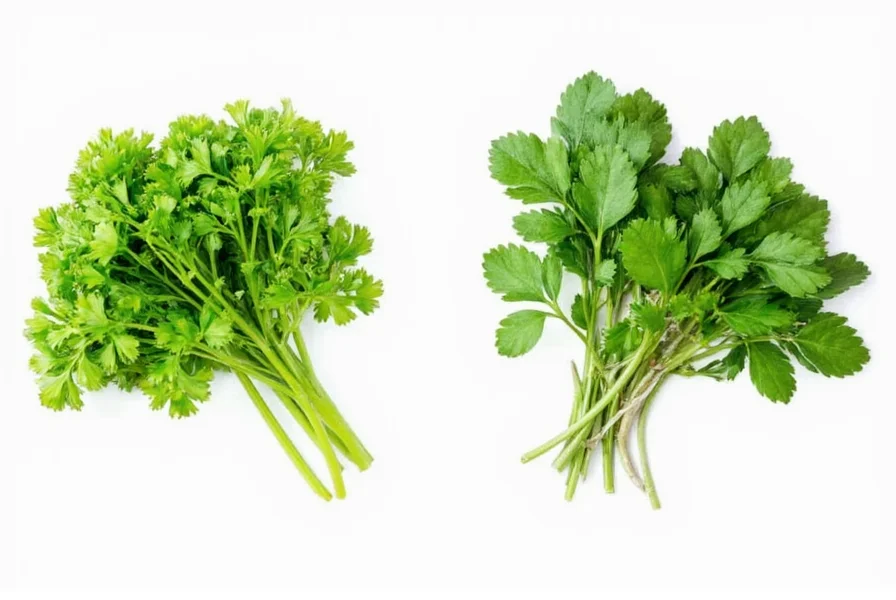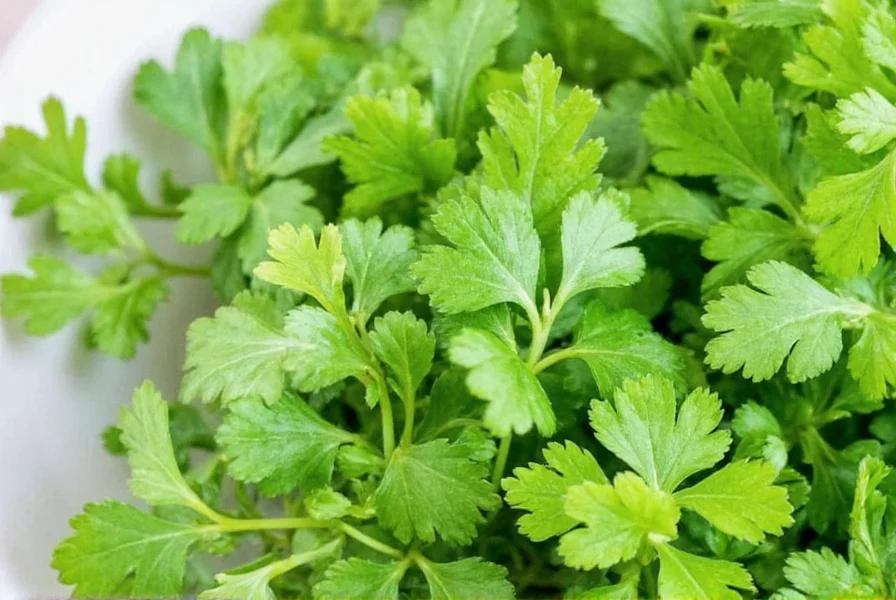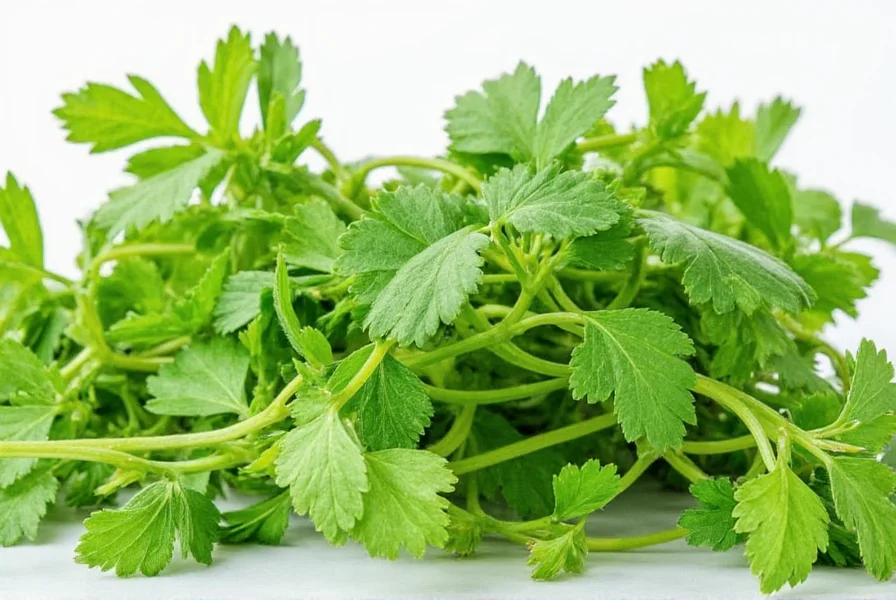Understanding the relationship between coriander and cilantro resolves a common culinary mystery that trips up home cooks and professional chefs alike. The Coriandrum sativum plant produces both the vibrant green herb known as cilantro in American English and the spice called coriander in most other English-speaking regions. This botanical reality explains why recipes from different countries might use seemingly contradictory terminology for what appears to be the same ingredient.
The Botanical Reality
The Coriandrum sativum plant belongs to the Apiaceae family, which includes parsley, carrots, and celery. Every part of this versatile plant serves culinary purposes, but two components dominate global cuisine:
- Leaves and stems: Harvested fresh, these constitute what Americans call cilantro and Brits call coriander
- Seeds: Dried and used as a spice, called coriander seeds universally
This dual naming system creates significant confusion, particularly when cooks encounter international recipes. When a British cookbook mentions "fresh coriander," it refers to what Americans would call cilantro. Conversely, when an American recipe specifies "coriander," it typically means the ground seeds.
| Characteristic | Cilantro (Leaves) | Coriander (Seeds) |
|---|---|---|
| Botanical source | Fresh leaves and stems | Mature dried seeds |
| Flavor profile | Bright, citrusy, sometimes soapy (to genetic carriers) | Warm, nutty, lemony, slightly sweet |
| Common uses | Garnish, salsas, chutneys, fresh sauces | Curry powders, pickling, baking, spice blends |
| Storage method | Refrigerate, use within 3-5 days | Airtight container, up to 6 months |
| Regional naming | US, Canada, Latin America | UK, Australia, India, most Commonwealth countries |
Why Two Different Names Exist
The linguistic divergence stems from historical language evolution. "Cilantro" comes from the Spanish word for the plant, which itself derives from the Latin coriandrum. Spanish-speaking countries and the United States adopted this term specifically for the fresh herb. Meanwhile, most other English-speaking countries retained "coriander" for both the fresh herb and its seeds, creating the modern confusion.
This naming difference represents one of many examples where regional language variations impact cooking. Similar discrepancies exist with terms like "rocket" (UK) versus "arugula" (US), or "aubergine" versus "eggplant." Understanding these distinctions prevents recipe mishaps and expands culinary literacy.

Culinary Applications and Substitutions
While both come from the same plant, cilantro leaves and coriander seeds serve dramatically different purposes in cooking. Their flavor compounds differ significantly due to varying concentrations of aldehydes and terpenes. Attempting to substitute one for the other usually produces disappointing results.
For cooks wondering can I use cilantro instead of coriander in recipes, the answer depends on context. Fresh cilantro cannot replace ground coriander seeds in spice-heavy dishes like curries or baked goods. However, in some fresh applications like certain salsas, a small amount of finely ground coriander seeds might provide a distant approximation of cilantro's flavor—though this substitution works poorly.
Understanding the difference between coriander seeds and cilantro helps prevent common cooking errors. Many novice cooks mistakenly believe they can interchange these components, not realizing they're working with fundamentally different flavor profiles from the same botanical source.
Genetic Factors in Perception
An interesting aspect of cilantro consumption involves genetic predisposition. Approximately 21% of the population carries a gene variant (OR6A2) that causes cilantro to taste like soap. This genetic difference explains why some people passionately dislike cilantro while others enjoy its bright flavor. Coriander seeds don't trigger this reaction, making them a viable alternative for those with the soapy cilantro gene.

Practical Kitchen Guidance
When navigating recipes that use these terms, consider these practical tips:
- Check the recipe's country of origin to anticipate naming conventions
- Look for contextual clues (fresh herb vs. dried spice)
- When in doubt, search for "[recipe name] + country" to understand terminology
- Remember that fresh coriander always means the leaves outside North America
- Ground coriander universally refers to the spice made from seeds
Professional chefs often clarify this distinction when teaching international cooking classes. Understanding why coriander and cilantro are called different names in various regions prevents costly ingredient mistakes and expands culinary versatility. This knowledge proves particularly valuable when adapting recipes from different cultural traditions.
Historical Context of Coriander Use
Coriandrum sativum ranks among the world's oldest documented herbs, with archaeological evidence dating back to 5000 BCE. Ancient Egyptians used both the leaves and seeds medicinally and culinarily. The plant's dual-purpose nature explains why different cultures developed distinct terms for its various components. This historical perspective helps explain coriander plant parts explained across different culinary traditions.
Frequently Asked Questions
Can I substitute coriander seeds for cilantro in recipes?
No, they cannot be directly substituted. Coriander seeds have a warm, nutty flavor while cilantro leaves offer a bright, citrusy taste. In fresh applications like salsas, no seed substitute works well. For cooked dishes requiring cilantro, try fresh parsley or culantro as alternatives instead.
Why does cilantro taste like soap to some people?
Approximately 21% of people carry a gene variant (OR6A2) that makes cilantro taste soapy. This genetic difference affects how aldehydes in cilantro are perceived. Coriander seeds don't trigger this reaction, making them a viable alternative for those affected.
Is Chinese parsley the same as cilantro?
Yes, Chinese parsley is another name for cilantro. The plant (Coriandrum sativum) goes by many regional names including cilantro, coriander, Chinese parsley, and dhania (in India). All refer to the same botanical species, though usage may specify leaves or seeds.
How should I store fresh cilantro to maximize freshness?
Treat cilantro like cut flowers: trim the stems, place in a glass with an inch of water, cover loosely with a plastic bag, and refrigerate. Change the water every two days. Properly stored, fresh cilantro lasts 7-10 days. Never wash until ready to use, as excess moisture accelerates spoilage.











 浙公网安备
33010002000092号
浙公网安备
33010002000092号 浙B2-20120091-4
浙B2-20120091-4